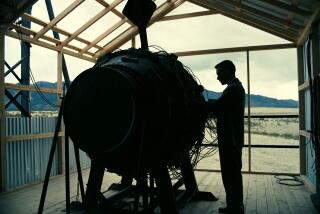Hirohito: Unspoken Unto Death
TOKYO â Memories so often confuse, after death as well as in life. Once the distant object of peasant reverence and patriotic dreams, the late emperor of Japan remains, even in todayâs secular post-industrial society, at the still heart of Japanese national identity.
Foreigners will tread here with care. Americans have long sensed this, and our sensitivity on this issue sets us apart from Japanâs other friends and neighbors.
Elsewhere there has been a sea of bitterness. At the outset of the emperorâs final bout of illness nearly four months ago, the British tabloid press was loud with charges of imperial crimes. For that countryâs war generation, the brutal Japanese treatment of British prisoners on the Burma Road created a pool of ill-will that the passage of four decades has done nothing to diminish. The queen will not be going to Tokyo for next monthâs imperial funeral.
For Americans, the issue is more complicated. Against the shock of Pearl Harbor and the horrors of the Bataan death march, we will set the 1944-45 incineration of Tokyo, a bombing campaign that may have claimed 300,000 victims.
Hundreds of thousands of American lives would almost certainly have been lost in a 1946 invasion of the Japanese mainland, but even U.S. Pacific veterans will weigh this potential loss against the reality of the atomic destruction at Hiroshima and Nagasaki. The British, on the other hand, feel that they have nothing to weigh.
We differ from our wartime allies therefore in the âJapanâ--a construct of words and images--that we Americans carry around in our heads. For once, it seems, we can set American complexity against European simplicity (ignorance, if you will).
For the British, the quintessential image of the emperor remains that of a youngish but bolt-upright sovereign in military uniform astride a white charger. So marginal has the emperor and his country been to postwar British circumstance that this image still defines how the man is perceived. Many Australians and Canadians share this view.
To wartime memories and film footage, however, an alert American will add the famous photograph of the emperor with Gen. Douglas MacArthur, the man who rightly judged that the emperor was not to be tried for war crimes. MacArthur knew that, unlike the British, we share an ocean with the Japanese and, war or no war, we have to live with them--and they with us.
Alongside this potent image, we might place photographs of an elderly monarch being greeted by President Richard M. Nixon in Alaska on the emperorâs first postwar trip abroad in 1971, one of the most astute gestures in postwar American diplomacy. To these, we might add snapshots of the gentle, almost frail figure who visited Disneyland in 1975.
This plurality of imperial images hints at the density, the complexity and indeed the near-intimacy of ties between Japan and the United States since the war. It is this postwar legacy that allows Americans to understand better than our European cousins the still more complex evolution of the emperorâs role during the last 40 years in Japan itself. There has been, to be fair, a lot to understand.
Before 1945, the emperor embodied the national essence of Japan. The 1889 Meiji constitution recognized his absolute status. For the ordinary Japanese, the emperor was not so much in the world as above it. His persona could not be looked upon, his voice not heard and his lineage not questioned. His title defined the layout of a page of print. His name was never mentioned; he was consistently referred to as âtenno heikaâ (very approximately, his majesty the emperor).
Language is at the heart of the matter. The imperial institution continues to cast a net of words over the Japanese people. His redefined constitutional role and his renunciation of divine status have relaxed, not eliminated, this web. During his final illness, the Japanese media always referred to the âcondition of his majesty.â Death was never mentioned, for Japanese emperors do not die--they vanish behind the clouds.
To speak of his imperial passing was inauspicious; a rigid taboo demanded that neither the government nor the mass media ever directly refer to the inevitable event, which was judiciously labeled âX-day.â
Throughout his 63 years on the Chrysanthemum throne, the emperorâs personal name--Hirohito--was almost never heard in public in Japan. Until recently, many younger Japanese would not have recognized his personal name.
Now in death, the late emperorâs name is frequently heard, yet the punctilious Japanese will still avoid the name Hirohito in favor of âtaiko tennoâ (the late emperor).
For an American to grapple with such distinctions is to begin unraveling an oriental mystery in the name of a common Pacific humanity.
The intense, though muted, Japanese national reaction confirms what historians have long suspected. The late emperor left his stamp on the Japanese national psyche in ways seen and unseen, sayable and unsayable.
More to Read
Sign up for Essential California
The most important California stories and recommendations in your inbox every morning.
You may occasionally receive promotional content from the Los Angeles Times.










